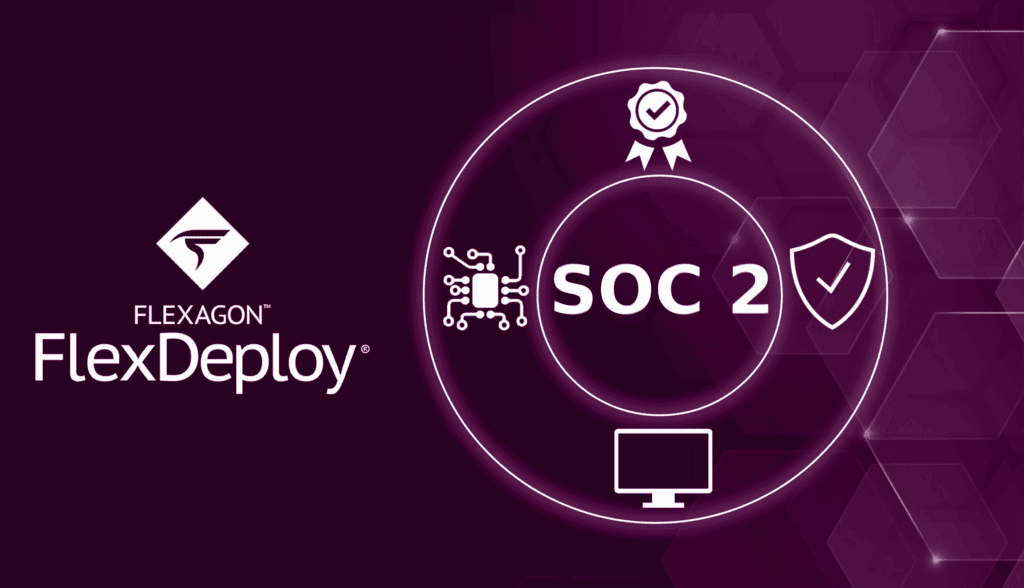Flexagon has released FlexDeploy 5.2 which includes many enhancements, usability improvements, and bug fixes. FlexDeploy is our DevOps platform for CI/CD and release automation which automates and orchestrates the entire build, deploy, and release lifecycle. FlexDeploy is an open and extensible platform with plugins and integrations for many commercial and open source technologies.
Here are some release highlights:
Blueprints
Blueprints help users get up and running quickly by automatically configuring FlexDeploy based on build and deploy common practices. Blueprints use a quick-start wizard to configure source control and other build/deploy information. A FlexDeploy Project is created along with all configurations for Source Control, Workflows, Project Properties and Topology. With Blueprints, users can be up and running in minutes!
Credentials and Secrets Management
FlexDeploy 5.2 introduces integration with external credential stores (aka Secrets Management) like HashiCorp Vault and CyberArk AAM. This integration is focused on retrieval of secure credential text during workflow executions. Credentials (password, passphrase, etc.) for FlexDeploy Endpoints, Projects, Environment Instances, and Integration Instances can be configured for retrieval from the external credential store. FlexDeploy also has a local credential store where credentials are stored in encrypted format. FlexDeploy has out of box integration for HashiCorp Vault and CyberArk AAM stores, and users can easily define integrations to other commercial and opensource credential store and secrets management tools.
Deployment Strategies
FlexDeploy 5.2 extends the already robust support for containers to includes native support for Kubernetes deployment strategies. An important focus in software development is the speed and frequency of deploying changes. Deployment strategies minimize the risk of frequent deployments in your release pipelines. FlexDeploy can be configured to define the manifest files for deployment into a K8s cluster, including support for Blue-Green, Canary, and A/B deployment strategies. The strategies can be applied on an individual FlexDeploy Project or in the context of a Release Pipeline.
New and Enhanced Plugins and Integrations
The number of out of the box plugins and integrations continues to grow, with almost 100 available today. A host of new plugins and enhancements to existing plugins have been delivered, examples include Ansible, Terraform, APEX, Oracle API Platform, Google Apigee, Oracle JET, Oracle Cloud Infrastructure, and Kubernetes.
This paper compares FlexDeploy to other commercial and open-source DevOps and Application Release Automation solutions.
Platform Support and Extensibility
There are many improvements in these areas, examples include a FlexDeploy Docker image with an embedded PostgreSQL database and REST APIs for Project and Release. The REST APIs available throughout the FlexDeploy platform are extensive, covering both configuration and execution and having coverage across almost 100% of the product capabilities.
Ease of FlexDeploy Evaluation and Adoption
We continue to improve the ease of evaluation, adoption, and ongoing care and feeding post-implementation. In addition to the new features in FlexDeploy 5.2 such as Blueprints which make it fast and easy to get started, there are many ways to quickly understand the benefits of FlexDeploy.
FlexDeploy blog series.
- FlexDeploy Love Containers
- FlexDeploy Loves APEX
- FlexDeploy Loves Oracle E-Business Suite
- FlexDeploy Loves Oracle Integration Cloud
- FlexDeploy Loves Oracle API Platform
- FlexDeploy Loves Fusion Middleware
For more details, please review the Release Notes.



